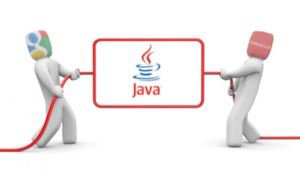What is Microfinancing?
Microfinancing is the provision of financial services, targeted at individuals and business who lack the provision to access conventional banking services. It increases access to finance in developing countries where a traditional banking institution would not extend credit to people if they have little or no assets. By using credit ratings, relationship banking, and microinsurance it helps families to take advantage of income-generating activities and enables users to better cope with the risks.
What is going on?
In the past decade, investors such as Bill Gates have begun pouring in capital in rural African communities.
In 2007, Opportunity International in Oak Brook, Illinois, one of the world’s largest microfinance organizations, has announced a $5.4 million grant and $10 million program-related investment (PRI) from the Bill & Melinda Gates Foundation in support of its efforts in five African nations.
The infusion of capital was used to fund new microfinance banks in Rwanda, Uganda, Kenya, and the Democratic Republic of Congo (DRC), as well as expand the organization’s operations in Ghana. The $10 million PRI, to be repaid over ten years at 1 percent interest, will be used to help fund the new banks during their second and third year of operation — typically, a difficult time for a microfinance institution to attract enough savings deposits and/or commercial debt to generate growth. In addition to strengthening the banks’ balance sheets, PRI funds used as intermediate loans can make them more attractive to external lenders, while also greatly increasing the amount of money they are able to lend to poor entrepreneurs. The banks opened in Rwanda, Kenya and Uganda in 2007, and the DRC in 2008.
More recently, in 2018 The Gates Foundation will contribute $50 million (€40.9 million) in financing, as well as an additional $12.5 million (€10.2 million) in technical assistance, to investment projects in the health sector in Africa through the EU’s framework to improve sustainable investments in Africa. This pooling of resources is designed to encourage additional private investment towards achieving the Sustainable Development Goals, and will allow successful projects to be scaled up more rapidly. The European Commission welcomes this strong support to its efforts towards sustainable development in Africa, and will match this contribution with another €50 million.
Why is this relevant to our class?
These loans help provide entrepreneurship opportunities and financial stability for those otherwise lacking the resources to make it possible. Microfinancing provides an alternative to the paternalism approach seen in “Poverty Inc.”.
For example, in sub-Saharan Africa, the poor have very limited access to long-term financing for housing, which is almost invariably limited to commercial banks offering formal, multiyear mortgages. Only 2.4 percent of the Kenyan population, for example, is able to afford typical loan rates. At the end of December 2018, there were only 26,187 active conventional mortgages in the whole country — the majority of which were granted to urban professionals. In Uganda, which has a population of 42.8 million, the number was just 5,000 in 2018.
Microfinancing for businesses and home loans helps improve society in a way that fosters entrepreneurship and small business development. It creates capital markets, an improvement of infrastructure, civil stability, and a healthier happier, more educated employment pool. For example, houses in Kenya which were micro financed reported in a significant decrease in vomiting, sore throats, and rashes, all illnesses associated with allergies and poor environment. There are countless studies that demonstrate the importance of a healthy home environment for a child’s future success, and microfinancing helps make this possible.
See also:
https://ec.europa.eu/commission/presscorner/detail/en/IP_18_361
https://philanthropynewsdigest.org/news/gates-foundation-provides-15.4-million-to-opportunity-international-for-microfinance-efforts-in-africa
https://www.wsbi-esbg.org/SiteCollectionDocuments/0587_ESBG_BRO_CENTRALREPORT%20(004).pdf
https://www.devex.com/news/sponsored/opinion-how-housing-microfinance-in-africa-can-improve-quality-of-life-93964
https://www.fintechmagazine.com/fintech/empowering-women-africa-through-microfinancing




